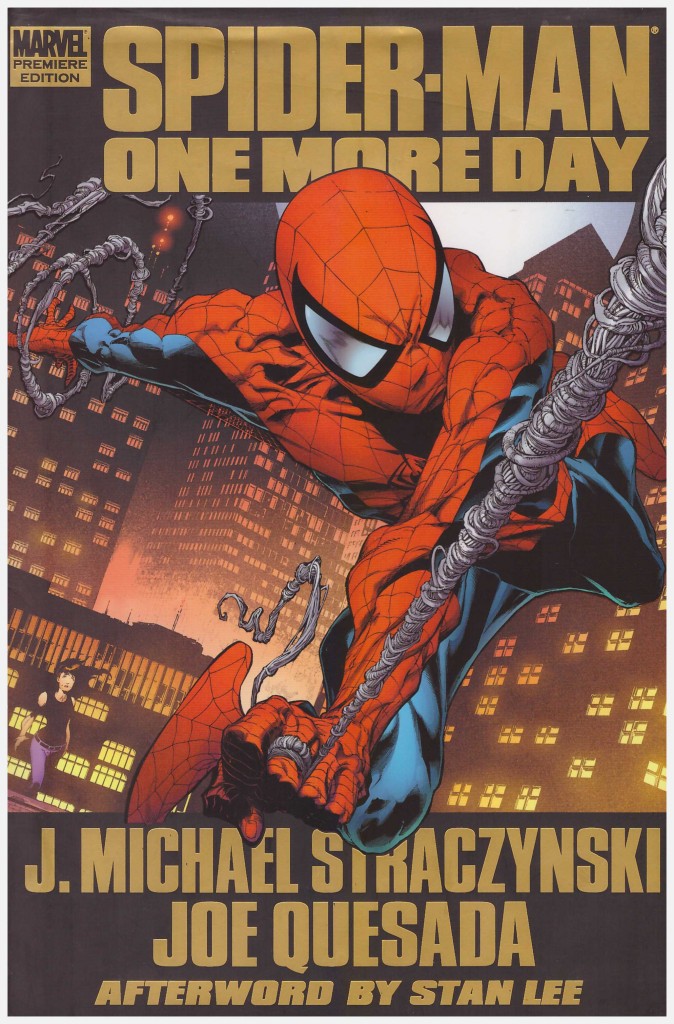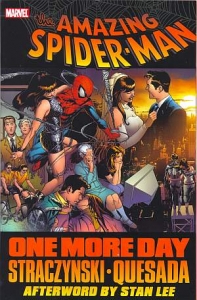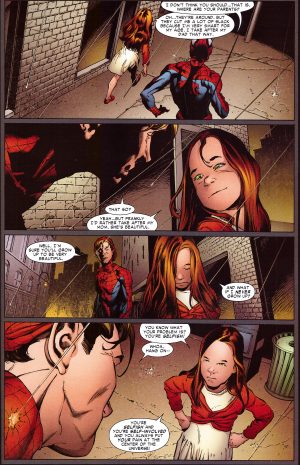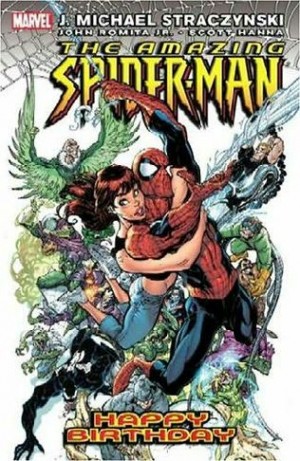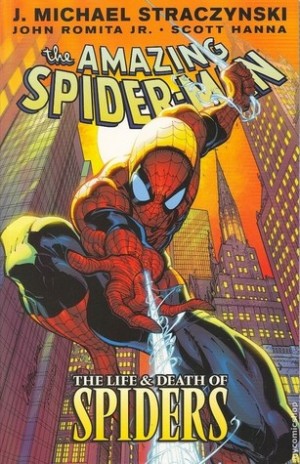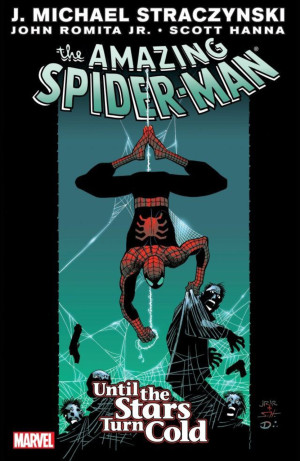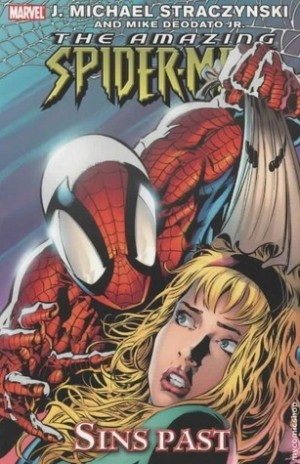Review by Frank Plowright
Spoilers in review
J. Michael Straczynski’s ground-breaking run on Spider-Man concludes here, continuing events from Back in Black. Along the way Straczynski tinkered with many holy aspects of Spider-Man, almost always improving the character, and left Spider-Man in inordinately better shape than he found him. The only mis-step, by consensus was Sins Past story, but One More Day also has its critics. Spoiler alert for the final paragraph.
At the start of this story Spider-Man has to solve two major problems, the deteriorating health of his Aunt May, and that he’s misguidedly revealed his civilian identity to the world. Neither appears to be solvable with a wave of the hand, but this is the Marvel universe, and very little is permanent or without solution. Additionally, during the desperate concluding moments to Back in Black Spider-Man had himself broken several laws, so should he hold himself to the same standards he holds others?
The two other Marvel characters most frequently utilised by Straczynski in Spider-Man were Doctor Strange and Tony Stark, and both are consulted in this four chapter tale, Stark as Iron Man rather than a civilian. Neither, though, can fully change his circumstances, and in Doctor Strange’s case a scene from an earlier issue is replayed through different eyes to good effect. Joe Quesada’s art for this sequence is noteworthy, incorporating the decorative flourishes employed by 1970s Doctor Strange artists in his page designs.
Quesada’s art is otherwise very theatrical, frequently resorting to light and shade to reflect the narrative theme, and the solution to Spider-Man’s crises is also very theatrical. There is a price to pay, and it involves sacrifice.
Throughout his tenure on Spider-Man Straczynski returns to what made Spider-Man, both literally in terms of his origin, and the person he’s become from that point. It’s very much running in the background here as well, with Parker given glimpses of men he could have become, one deliberately resembling Tony Stark. The central point is only the man he actually developed into possesses the price required for his salvation, and interestingly when there’s a decision to be made it’s not Peter Parker who ultimately has to make it. As with elements of Straczynski’s previous material, it’s a cerebral theme given people’s expectations for Spider-Man, and that’s what makes it a memorable story.
It’s also memorable for the controversy it engendered. A way of interpreting this story is that by surrendering his love to solve his problems Peter Parker sold his wife to the devil. That’s a real stretch, and doesn’t take into account that Mary Jane was a willing participant in the deal made. A valid accusation is that editorially Marvel had backed themselves into a corner by having Spider-Man reveal he was Peter Parker, and considered his marriage restrictive. The solution was in effect to push a reset button, and regular readers felt cheated. Your view will depend on how essential continuity is to your appreciation of a superhero story. Much of the editorial impetus was generated by Quesada, not only the artist, but Marvel’s editor in chief, and he revisits the story in One Moment in Time. Spider-Man’s continuity continues in Brand New Day, introduced in the final pages of this volume.
